At the 2019 National Railroad Construction & Maintenance Association Conference, Metra Chief Operating Officer and Deputy Executive Director Bruce Marcheschi outlined a capital program the agency called its Big Ask — a bold, $5-billion plan covering everything from new locomotives to electrification of its Rock Island District.
The state of Illinois subsequently passed a budget that helped boost Metra’s capital funding from $185.6 million to $480.5 million in 2020 and to $2.58 billion between 2020 and 2024.
While that’s far more than Metra had become used to in its living-on-a-shoestring capital planning, it’s still well short of its $5 billion master plan. So how did the agency decide what makes the funding cut?
“We broke it into four buckets,” Marcheschi told Trains News Wire Monday night, “to get more organized and less chaotic. Because we’ve had a backlog for years.” Those “buckets” are rolling stock, infrastructure, stations and customer experience, and growth and expansion.
The agency has had a hard time addressing all four of those areas as it lacked state funding, because of an ongoing budget impasse, while fulfilling the federally mandated implementation of positive train control. Beyond that, the available money mostly went to the basic infrastructure needs to maintain safe operation.
“It’s kind of like juggling chain saws while you’re ice skating,” Marcheschi said.
Now, with more funds in hand, rolling stock, customer experience, and growth and expansion will all see more attention, even as Metra continues to address its longstanding infrastructure needs.
“We all sat in a room and decided, what’s going to keep the business safe, drive the business to be efficient and reliable, and what’s going to grow the business for the future,” Marcheschi said. “That’s the point where we got to where we’re at. Hard choices, a lot of bickering back and forth between departments, but at the end of the day, we all came together and developed the four-bucket plan.”
So where is the money going? Almost half of the 2020 capital plan, $239.3 million, will go to rolling stock. Another $68.7 million is ticketed for bridges, track, and structures; $63.3 million to facilities and equipment, $51.2 million to stations and parking, $34.2 million to signals, electronics and communications, and $23.8 million to support activities. Within those areas, Marcheschi offered updates on specific projects during his Monday NRC presentation.
Rolling stock: Metra is in the “blackout period” of its request for proposals for the purchase of 200 new passenger cars, with an option for 200 more. That means the proposals are being reviewed and scored. The hope is to have a recommendation to Metra’s board for a car order by June. Meanwhile, the first locomotives in the order for 15 remanufactured SD70MACH locomotives from Progress Rail is expected in August 2021.
Infrastructure: Marcheschi says that Metra has more than 450 bridges more than 100 years old. The 2020 budget will spend $69 million to address that issue; design work will begin on a number of projects, while construction is expected to begin at four notable locations: at 43rd Street and Root Street on the Rock Island District, to replace a bridge built in 1897; a timber bridge on the Rock Island at Morgan Street, last rebuild in 1973; A32, a bridge on Milwaukee North Line built in 1899; and Bridge 275, a suburban Rock island District bridge built in 1929.
Facilities and equipment: Projects include renovation and expansion of the Western and California yards, a new 14th Street fueling facility; new crew and training facilities, a new control center, and a new transfer table at the Rock Island District’s 47th Street Shops.
Stations: Upgrades including new warming shelters, signage, lighting, accessible platforms, and other improvements are planned at 20 stations in the next two years and 31 in five years. That includes new stations at Auburn Park on the Rock Island and Peterson Ridge on the UP North.





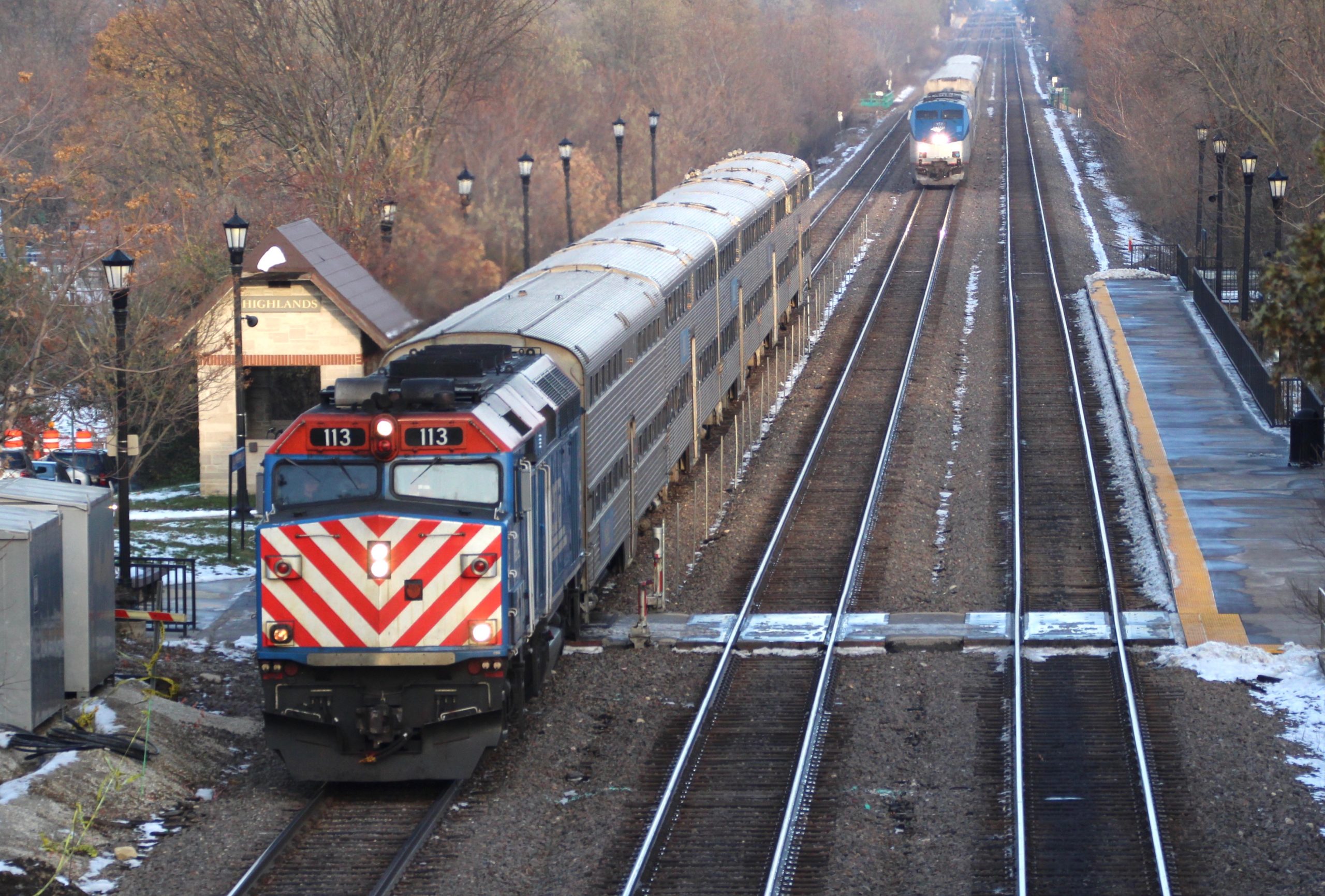

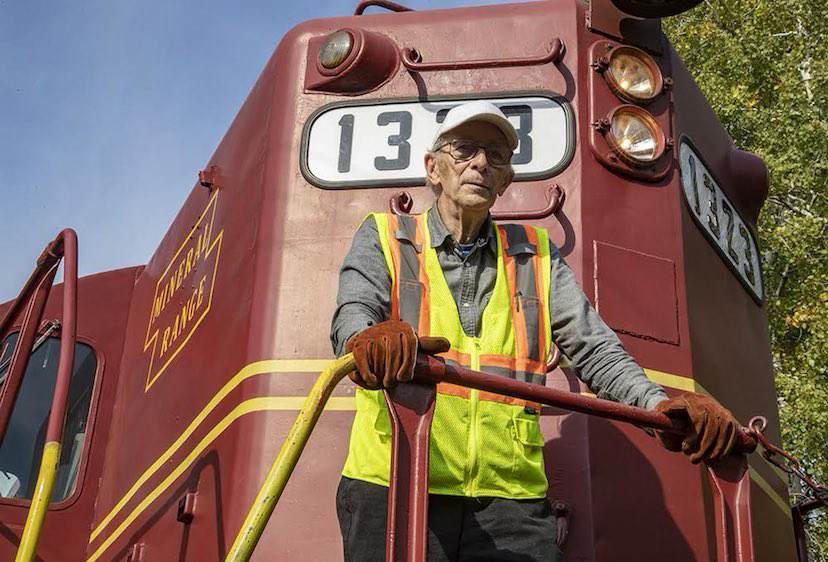
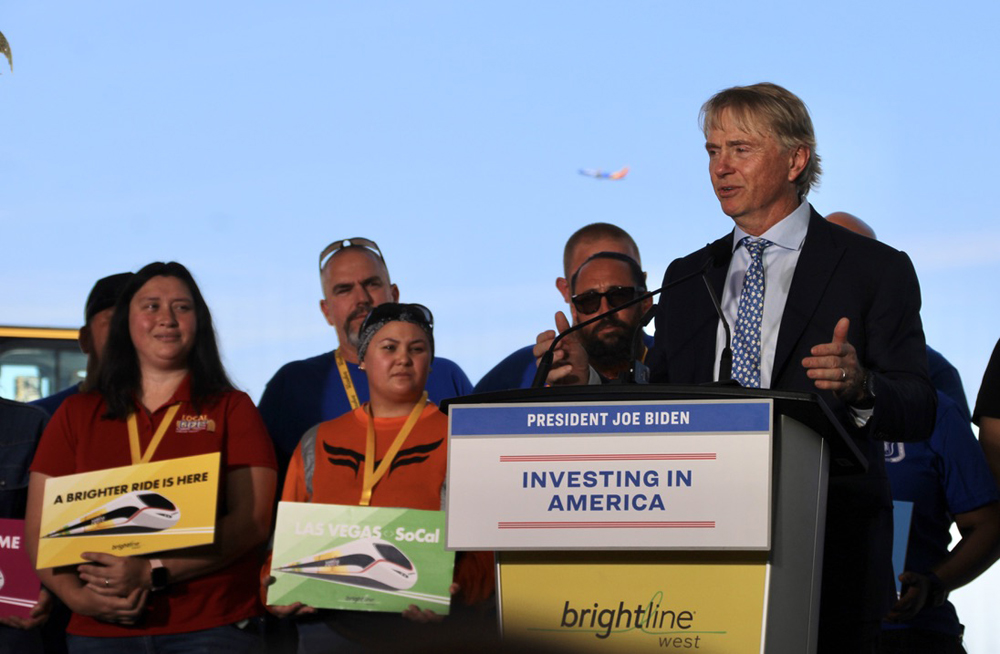
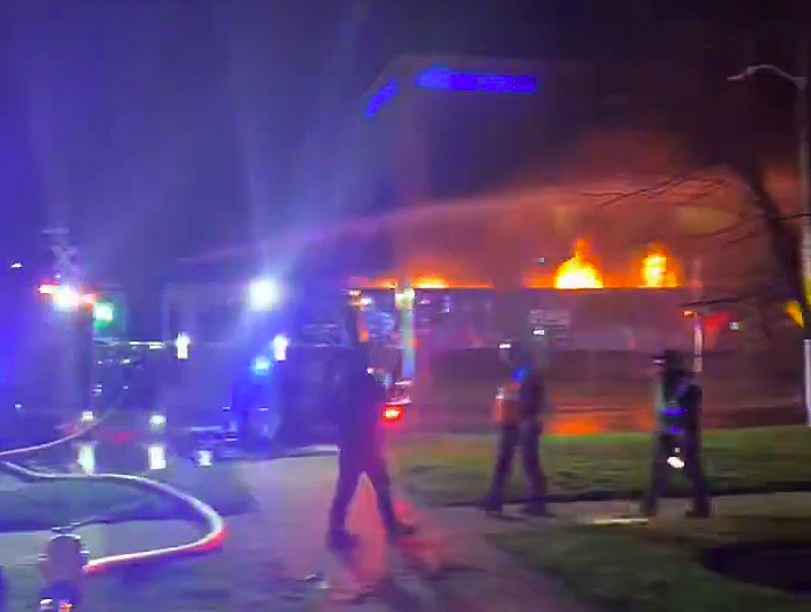
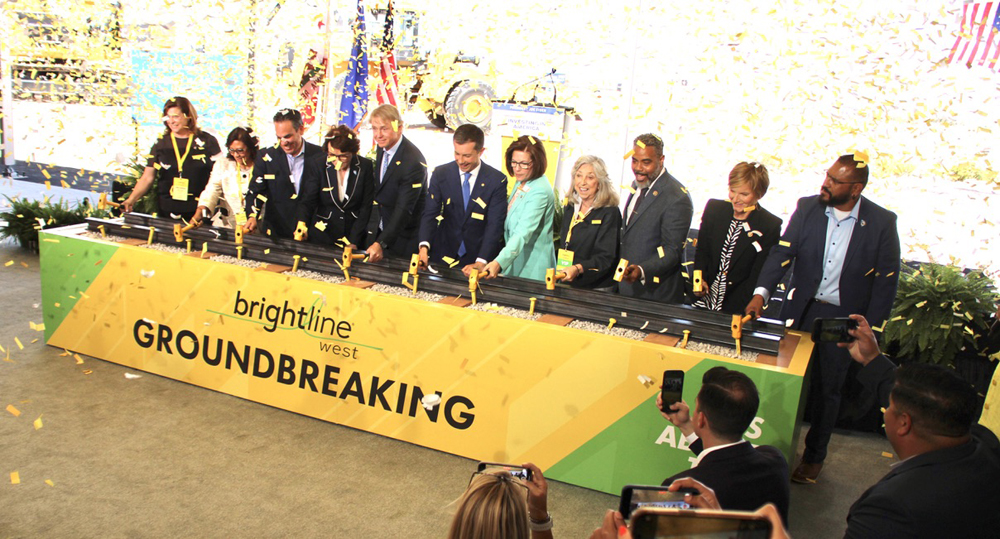




MARK – Thanks for correcting me. I misspoke. I should not have said the major carriers cross-subsidize METRA. That was wrong of me; you set me straight.
Here is what I should have said. On lines owned by the major carriers, METRA benefits by there being two railroads to support the infrastructure. On lines owned by METRA there is no such benefit and METRA itself (or METRA and AMTRAK) need to manage all the infrastructure cost.
THOMAS and IAN – A couple of points. Actually, four points.
One, nothing is as convoluted as public utility accounting. While revenue is relatively straightforward there are so many factors and so many components to the costs (including externalities) it drives everyone nuts. One can have an informed and thoughtful opinion (as THOMAS does) but the specific numbers can never be nailed down.
Second point, say what you want about freeways, they carry a lot of people. A medium-stress freeway (well below what you might see in Houston or LA or the DC suburbs) carries 85k vehicles per day. Our about the same as Amtrak carries nationwide on all routes.
Third, speaking to mass transit, one must speak to the inefficiencies of modal transfer. On the macro scale of course there are airports. Someone has to pay for those Manhattan-size airport parking garages, access roads, etc., while the motor fuel burned by the cars entering and leaving. On a micro level, you have rail or transit park-rides. I’ve seen far too many apples – to – oranges comparison of rail efficiency to highway efficiency, all of which ignore the land and energy consumption of the park-rides.
Fourthly, the claim of rail efficiency (fuel, land use, etc.) ignores terminal costs and deadhead moves, instead to focus on the theoretical peak efficiency. Yeah, rail in the best accounting is highly efficient, especially if you don’t look too closely. This is true in all modes (like taking your automobile in for service) but seems especially pronounced in rail and certainly city buses. I see city buses in Milwaukee County or Waukesha Metro with few or no people on them, serving roundabout routes. How efficient is that?
Charles, the BNSF & UPRR do not “cross-subsidize Metra” in any way. In fact, it’s the other way around. Metra subsidizes { reimburses } these two railroads for all maintenance & manpower etc. incurred on the tracks they use for their operation. The purchase of service agreement is not only a ‘break-even’ deal for the class one’s, they make a tidy profit.
What I’ll point out is the Freeways did not steal all the patrons of commuter railroads and interurbans, just enough to make them from money losers to real sinkholes.
As to the Eisenhower and Chicago, Aurora and Elgin, what Illinois tried to pay for was just the right of way leaving the CA&E without any connection to downtown. Then they tried to get the interurban to accept a rickety single track connection at the end of an elevated line. The CA&E had a high speed line into downtown that the freeway took.
Without the high speed line there was no way the CA&E could hope to keep even a marginal passenger count. The state thought there was no way that the interurban would have the funds to fight. They were right, the interurban didn’t, the creditors in bankrupcy court did.
Paul, Excellent point about the highway subsidy, and there’s a lot more to it than that. We could go into several layers. Here’s one: Think property tax. Private railroads pay local property taxes on their rights of way. Highways are not assessed property tax, not even the privatized turnpikes. Relief from such taxes was assured when certain toll roads were sold off for deficit reduction.
Anna posed the question: What happened (to the private electric commuter rail system)? Part of the answer is subsidized highway development. There’s an old adage: if something is subsidized, you get more of it. So, this is where we are. Ever increasing highway miles and shrinking rail miles.
Railroads are far more efficient in transportation of goods and people in terms of consumption and land use than any other tertiary form of movement. If it were not for this superior efficiency, the rails would have disappeared decades ago. The imbalance of subsidy could be corrected. This is what was intended when the USDOT was formed from separate modal entities. But, there are now too many vested interests in maintaining the subsidies as they are, or even increasing the highway subsidy.
Remember the deficit reduction fuel tax? The truckers succeeded in lobbying to have them eliminated. The railroads didn’t.
IAN – Good history of Chicago expressways, but it talks around the issue. IAN you post as if the Edens, Eisenhower, Dan Ryan etc. left Chicago with no patrons for public transportation. METRA has plenty of passengers. Its trains are frequent and its load factor high. Full and frequent trains lose money while the bill for needed infrastructure keeps piling up. Ditto the CTA.
Just as New York and New Jersey haven’t funded the NEC tunnels, parts of Chicago CREATE remain unfunded. Do I have the answer? No, I don’t. I will repeat my analogy to medical costs. Both my parents died at age 68, one after a long illness and one after a sudden heart attack. I’m 73, my brother will be 77 next week and my sister turned 81 yesterday. For a number of factors including massive spending for types of medical care that didn’t exist in the previous generations. More medical care means people live longer, demanding more medical care and, to my point, better medical care.
It’s the same in public transportation. ICRR left METRA with a wretched railroad with wretched stations. It’s a passenger-only line so there’s no BNSF or UPRR to cross-subsidize METRA. A generation later METRA Electric passengers want modern and cleaner stations with access for the disabled. And while I’m the furthest thing from a Bernie Sanders socialist, I’m not blind and I do notice that the more affluent suburbs get better stations, I guess because the locals pay for them.
So we have a system subsidized by the federal, state and local governments and cross-subsidized by the major freight lines. Yet it can’t balance the books. Anyone have any ideas? I don’t.
There is a form of cross subsidization to Metra by the class 1s where Metra runs on trackage used by Class 1s and that’s restricted freight movement during the dinky rush.
I’d also say that no road is paying for its state of good repair capital funds, let alone capacity expansion capital given that the fuel tax/user fee raises insufficient funding. And it’s share is decreasing. Same might be true for opex (snow removal, traffic control, law enforcement) paid for out of the general fund. And there’s a whole lot more miles of road infrastructure per using population than commute/transit rail miles.
ANNA – Sam Insull’s DeLorean trolleys did fine until they didn’t do fine. No comparison to today’s Metra which like all other passenger lines worldwide today can’t balance the books.
I’m sure every passenger railroad in the world would like to borrow a DeLorean time machine and make things as they were a century ago.
As far as Metra, I wouldn’t call their service sh….ty as you did. It’s a very good railroad accumulating unfunded capital needs and operating costs. It’s like America’s health care system. The care is great but no one can figure out how to pay for it.
What’s changed between then and now, you ask? The bill is coming due. To cite just one example, compare the cost of modern, well-built disabled access stations on the Metra Electric to the filthy rotting wooden shambles Metra inherited from the Illinois Central. That’s what’s changed. Among many many other factors. To further the discussion I would posit that a safe and accessible car on Metra’s shopping list would have considerable fewer seats than a 1960’s-era Burlington gallery car.
Samuel Insull (1859-1938) built a utilities and railroad empire centred on Chicago around the turn of the 20th Century. It was privately owned and did fine until it unravelled in the Great Depression.
How it is that such a thing could thrive and here we are with Metra getting scatalogical service and having to subsidize the service we do get by periodic applications to the general taxation stream?
What has changed between the days of the Insull empire and now?
The above comments are generic in nature and do not form the basis for an attorney/client relationship. They do not constitute legal advice. I am not your attorney. Al Capone was well known for financing the operation of soup kitchens in the greater Chicago area.
People wouldn’t mind paying for the needed infrastructure so much if they were sure that that is where it would go instead of into the pockets of corrupt pols and their pals.
What has changed between now and then, people complaining about the taxes to pay for all those roads.
In 1900 there were dirt roads that turned to mid in the rain, railroads and new fangled electric interurbans. By 1920 Ford and GM were cranking out automobiles. By 1940 those dirt roads were paved.
Well the railroads were hauling huge amounts of things like grain and coal. The interurbans fewer and fewer people.
The 1920’s in addition to being the roaring 20’s were also a time of a large inflationary economy. And the interurbans had to survive in a regulated environment with price controls on what they could get from the farebox, against the ever increasing labor costs, as workers tried to negotiate living wages. Many, many, many interurbans died between 1920 and 1929. The depression was just the final nail in the coffin for many of the survivors.
By and large the North Shore was a casualty of the Edens Expressway siphoning off passengers into cars. The Chicago, Aurora, and Elgin was done in by the construction of the Eisenhower which was built on their RoW, amputating their access to the loop. The South Shore survived on bridge traffic and coal deliveries(they used to have a coal power plant online) subsiding the passenger operation.
Both the Elgin and the North Shore ran fast were there where no freeways. When the freeways were built, it did not take long for those two Chicago interurbans to die. It took a number of years but the bankruptcy estate eventually(IIRC) forced the state of Illinois to pay for the whole railroad, not just what they took to build the freeway.
PS bad habit I tend to call a multi-lane, limited access, truck accessible, divided road a freeway even if it is an Expressway, Toll Road, or Turnpike. I did this so many times here, it is easier to leave this PS.
JEFFREY – Track and rolling stock on the Metra Electric is much improved and a substantial number of stations rebuilt and disabled access added, There’s more to go but this is a huge start.
We might add that Millenium Station while I’m not happy with the design is a huge improvement over ICRR’s Randolph Street hole on the ground.
I don’t doubt that the former IC electric division’s physical plant needed improving when Metra bought it, but that was 33 years ago (1987). What has Metra been doing since then?
Much has been written about Insull, but the simplistic observation about his electric empire is that it was a house of cards, which upon collapse left him a hated man by his fleeced investors.